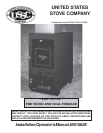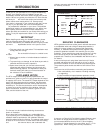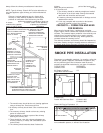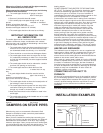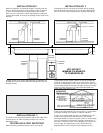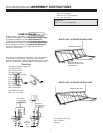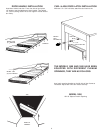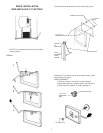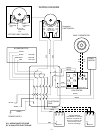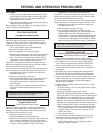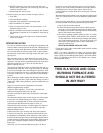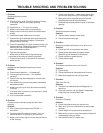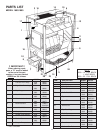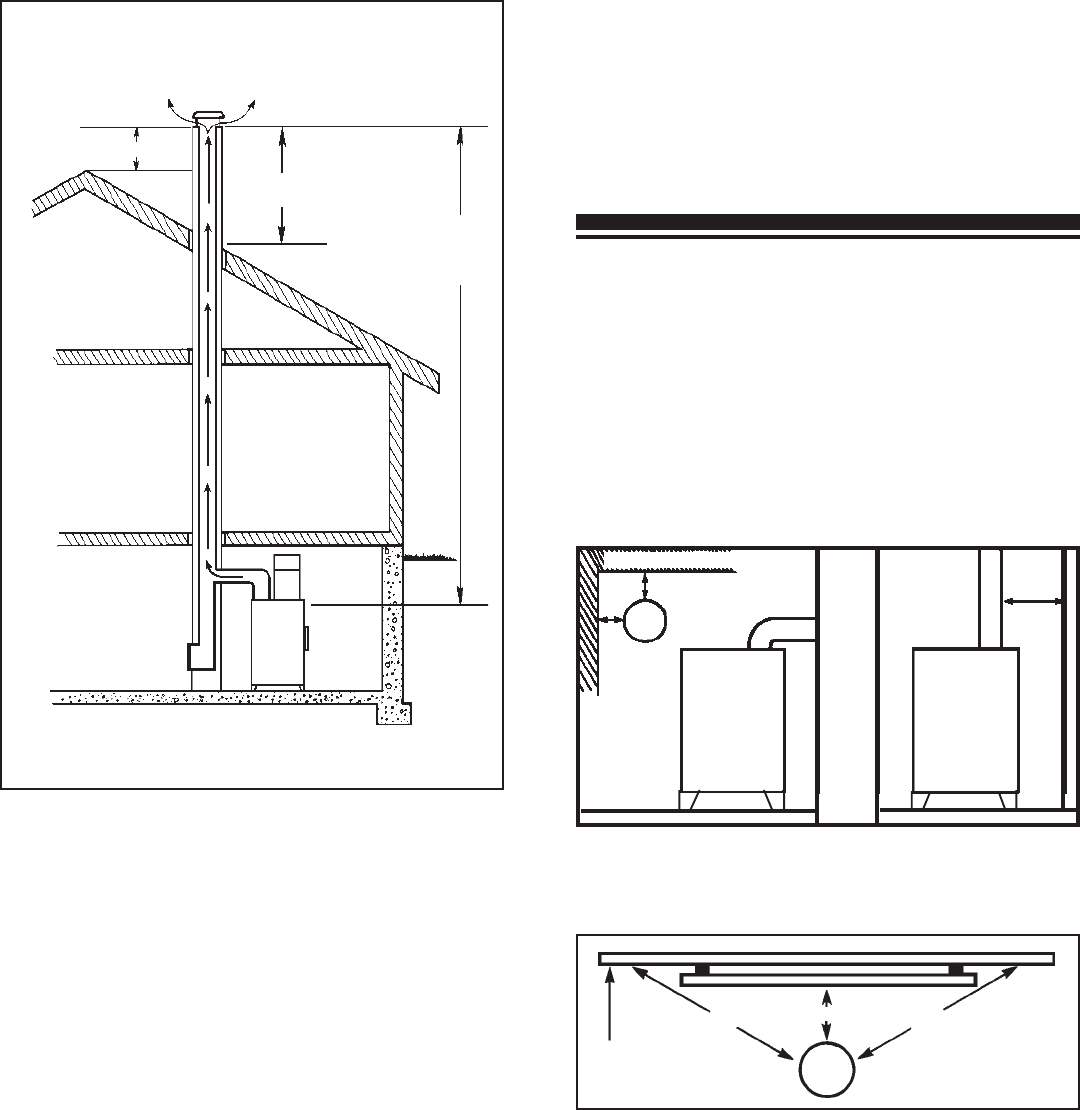
always follow the chimney manufacturers instructions.
NOTE: Type of chimney: Class A All-Fuel also referred to as
Low-Heat appliance type chimney per Uniform Mechanical
Code:
Chimney, low-heat appliance type is a factory built,
masonry or metal chimney suitable for removing the
products of combustion from fuel-burning low-heat
appliances producing combustion gases not
in excess of 1000°F under normal operating
conditions but capable of producing combustion
gases of 1400°F during intermittent
forced firing for periods up to one hour. All
temperatures are measured at the appliance flue outlet.
1. The wood furnace should be the only heating appliance
using a chimney flue. One furnace per flue.
2. A masonry chimney should have a tile or stainless steel
liner.
3. The masonry chimney should not have any missing
mortar or loose bricks.
4. There should be no mortar or parts of the chimney
blocking the chimney flue.
5. There should be a two inch clearance between any
chimney (masonry or metal) and combustibles (such
as the house).
6. The chimney should extend at least 2' above the
highest point of the house, or 2'
above the point at which the chimney
is 10' from the roof.
7. The chimney should be relatively straight and vertical.
8. The portion of an all-fuel metal chimney that extends
above the roof should be well secured.
9. A masonry chimney should be built on footings and not
attached to the house.
10. A rain cap, complete with an animal or bird screen,
should be installed on top of the chimney.
CREOSOTE — FORMATION AND NEED
FOR REMOVAL
When wood is burned slowly, it produces tar and other
organic vapors, which combine with expelled moisture to form
creosote. The creosote vapors condense in the relatively cool
chimney flue of a slow-burning fire. As a result, creosote
residue accumulates on the flue lining. When ignited, this
creosote makes an extremely hot fire.
The chimney connector and chimney should be inspected at
least twice monthly during the heating season to determine if
a creosote build-up has occurred. If creosote has accumu-
lated, it should be removed to reduce the risk of a
chimney fire.
SMOKE PIPE INSTALLATION
Clearances to combustible materials (i.e. paneling, ceiling tile,
sheet rock, plaster, draperies, casements or wood trim, etc.)
will vary with the type of flue connection used. Be sure to
maintain the specified clearances for your type of installation.
TYPE OF FLUE REQUIRED
CONNECTION CLEARANCE
24 Gauge or Heavier 18"
Single Wall Stainless Steel
CEILING OR WALL
18"
9"
18"
COMBUSTIBLES
SMOKE PIPE
TOP OF CHIMNEY MUST BE
2 FT. ABOVE HIGHEST
POINT OF ROOF
2 FT.
MINIMUMS
3 FT.
MINIMUM
CAP SHOULD HELP
PREVENT DOWNDRAFT
WHILE STILL PROVIDING
ADEQUATE EXHAUST.
MINIMAL 3 FT.
FROM TOP OF
CHIMNEY TO POINT
AT WHICH IT PASSES
THROUGH THE ROOF.
RECOMMENDED
MINIMAL
20 FT. HEIGHT
CHIMNEY FLUE
SHOULD BE
CONSTANT DIAMETER
THROUGHOUT ITS
ENTIRE HEIGHT.
CHIMNEY FLUE
MUST BE AS
LARGE OR
LARGER THAN
FURNACE FLUE
PIPE
APPROVED
CHIMNEY
CLEANOUT DOOR
SHOULD HAVE
AIRTIGHT FIT. DO
NOT LEAVE OPEN
WHEN FURNACE IS
IN OPERATION.
CHIMNEY THIMBLE SHOULD BE
CONSTRUCTED OF FIRE CLAY, AND
SHOULD FIT TIGHTLY TO FLUE PIPE.
2
or Black Pipe
Double Wall Stainless Steel 6" Model 1600
8" Model 1800
Class A All-Fuel or Equivalent 2"
According to NFPA standards, single wall stove pipes can be
within 9" of combustibles provided an approved fire retardant
material covered with 28 gauge sheet metal, spaced out 1" on
non-combustible spacers, is utilized. See illustration.



